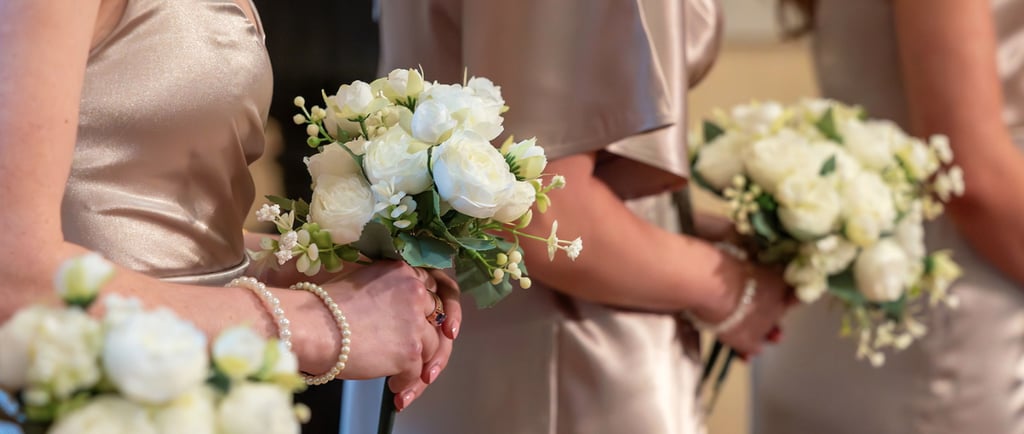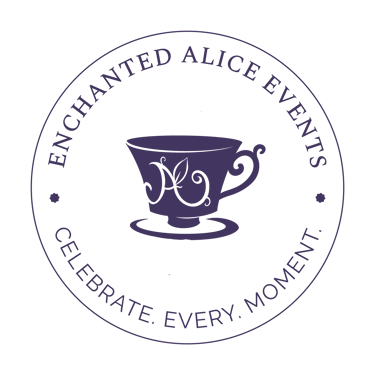Real vs. Fake Flowers: Which Should You Choose for Your Wedding?
WEDDING PLANNINGFLORAL DESIGNWEDDING ADVICE


The Beauty and Benefits of Real Flowers
Real flowers have long been a cherished element in wedding celebrations, embodying natural beauty and elegance that artificial alternatives often struggle to replicate. Their vibrant colors, unique textures, and intricate shapes bring an organic charm to weddings, allowing couples to curate a truly personal aesthetic that reflects their unique love story. The aromatic scent of fresh flowers can create a delightful atmosphere, evoking a sense of warmth and intimacy that enhances the overall ambiance of the event.
One notable advantage of utilizing real flowers is the extensive variety they offer. Each season introduces a new palette of blossoms, enabling couples to choose blooms that align with their theme and color scheme. Whether it is spring’s cherry blossoms or autumnal dahlias, fresh flowers provide an array of options to suit every style and preference. Additionally, many couples have an emotional connection to particular flowers—perhaps representing a favorite place, a cherished memory, or a beloved family tradition, making real flowers a meaningful choice for their special day.
When sourcing high-quality real flowers, it is essential to align with local florists who understand the nuances of seasonal blooms. This not only ensures optimal freshness but also supports local businesses. Furthermore, couples should consider their flowers' care and preservation on the wedding day. Flower arrangements should be kept in water and stored properly before the ceremony to maintain their vitality. With careful attention to these details, couples can enjoy the beauty and benefits of real flowers while creating an enchanting atmosphere for their wedding celebration.
Advantages of Artificial Flowers
When planning a wedding, one of the significant decisions couples face is whether to use real or artificial flowers. Artificial flowers offer a multitude of advantages that make them an appealing option for many brides and grooms. One of the primary benefits is their durability. Unlike real flowers, which can wilt or become damaged before the big day, artificial flowers maintain their appearance regardless of environmental conditions. This resilience ensures that they look pristine throughout the event, making them an ideal choice for anyone concerned about the visual aspects of their floral arrangements.
Cost-effectiveness is another critical consideration. Real flowers can be prohibitively expensive, especially for larger weddings that require extensive floral decorations. In contrast, artificial flowers are generally more affordable and allow couples to allocate their budget toward other priorities. Furthermore, once the wedding is over, these flowers can be stored and reused for various occasions, or kept as sentimental mementos. This not only adds value to the purchase but also offers couples the chance to relive their special day through these keepsakes.
Customization is another significant advantage of using fake flowers. Couples can easily find or create flowers that perfectly match their wedding theme or color palette, ensuring a cohesive look throughout the venue. This level of personalization is often harder to achieve with real flowers, which are subject to seasonal availability and other constraints. Additionally, artificial flowers can be an excellent solution for anyone with allergies, as they eliminate the risk of reactions associated with pollen or other allergens found in natural blooms.
Finally, in considering the environmental impact, it's essential to note that artificial flowers do not contribute to the same waste issues associated with real flowers, which often go unutilized after the event. This reality presents a more sustainable option for eco-conscious couples who want to minimize their carbon footprint while still achieving beauty and elegance on their wedding day.
Cost Comparison: Real Vs. Fake Flowers
When considering decorative options for weddings, one of the most significant factors is the cost associated with real versus fake flowers. Understanding the price ranges can help couples make an informed decision based on their budget. Real flowers typically range from $800 to $13,000 for a wedding, depending on the type of blooms, seasonal availability, and the complexity of floral arrangements. Bouquets and centerpieces can significantly influence this cost, particularly if elaborate designs are desired. Popular choices for real flowers include roses, peonies, and hydrangeas, which can fluctuate in price based on the season, availability, and geographic region.
Conversely, fake flowers, or artificial arrangements, provide a more predictable price structure. On average, couples can expect to spend between $500 to $10,000 on faux floral arrangements. While artificial flowers may require a larger upfront investment, they offer considerable long-term savings. They can be reused in home décor, given as gifts, or even donated, whereas real flowers are often discarded after the event. This durability and versatility can make fake flowers a cost-effective wedding choice in the long run.
When budgeting for wedding florals, it’s also essential to consider potential hidden costs. For real flowers, additional expenses may include delivery fees, setup, and labor costs for arrangements. For artificial options, while the purchase price may be lower, couples should account for any extra decor needed to complement the faux flowers, particularly if they are of lower quality. In making a choice between real and fake flowers, a thorough understanding of the costs associated with both options, factoring in the nuances like seasonal availability and potential reuse, will allow couples to make well-informed decisions that align with their financial plans.
Making the Right Choice for Your Wedding
When it comes to selecting flowers for your wedding, understanding the benefits and drawbacks of both real and fake flowers is essential for making an informed decision. Couples should start by considering their overall wedding theme and venue. For instance, if you are planning a romantic garden wedding, real flowers may enhance the natural aesthetics of the surroundings. However, if you are getting married in a more unconventional setting, such as an industrial loft, artificial flowers can provide a unique touch while offering versatile design options.
Budget is another critical factor. Real flowers can be expensive, especially if you desire rare blooms or large arrangements. On the other hand, fake flowers may afford more flexibility in terms of budgeting, as they can be reused or repurposed after the event. Couples should assess their financial constraints while weighing the aesthetic impact each option has on the overall decor.
It is also important to reflect on personal preferences. Do you have a special connection to certain flowers, or do you prefer the look of silk arrangements? Discussing these preferences with a florist can illuminate various options tailored to your vision. Consider utilizing a blend of both real and artificial flowers to create a harmonious design. For instance, you might choose real flowers for the bridal bouquet for their freshness and scent, while opting for faux arrangements for centerpieces that will endure the entire event.
Engaging with a professional florist or wedding planner can provide additional insights on how to integrate these elements effectively. As you navigate this decision-making process, consider posing questions about maintenance, seasonal availability, and delivery logistics. By thoughtfully evaluating each aspect, you will be well-equipped to make an informed choice that reflects your style and budget for your wedding day.
